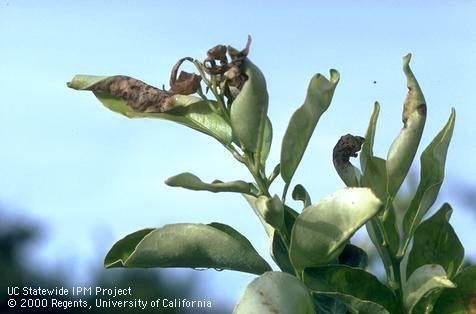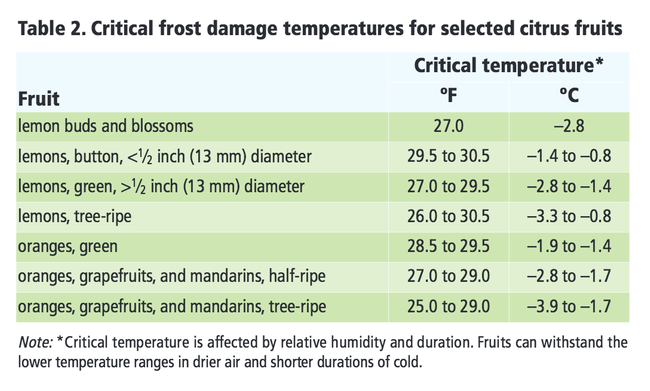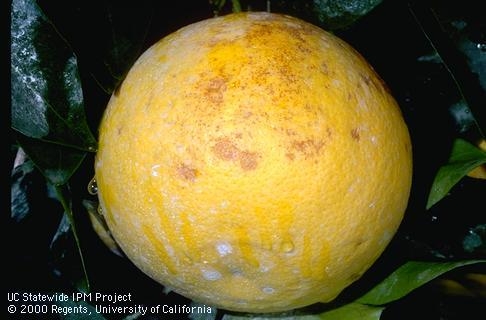Plummeting winter temperatures often lead to frost damage in plants. The damage occurs when ice crystals form within plant tissue, damaging their cells. Leaves and tender new growth are usually affected first. Initially, they will appear wilted. Then the wilted growth will turn brown or black and eventually become crispy. This means these affected parts of the plant have died.

In citrus, if hardier growth (such as twigs or wood) has not been seriously damaged, it is normal for dead leaves to be rapidly shed. If the frost-killed leaves remain on the plant, this is an indication that twigs or branches have been seriously damaged. If larger branches or the trunk of a tree sustain cold damage, the bark will split and dead patches of curled, dry bark may appear. If a young citrus tree has been killed nearly to the ground, inspect it closely to determine if the damage extends below the union. The union is the junction where the fruit-producing part of the tree was grafted onto the rootstock. If new growth comes only from the rootstock, the tree will no longer be true to the type you originally planted and will usually be unproductive. In this case, the tree should be replaced.

It is also important to note that frost-damaged plants are unbalanced: although their leaves have been reduced, they still have the same root system. This can result in extensive new growth over the entire plant.

Of course, it would be preferable to prevent frost damage from occurring in the first place. For specific information on frost protection, see our Real Dirt articles on this topic.
To learn more about the UC Master Gardeners of Butte County, and for help with gardening in our area, visit our website. The Master Gardeners have produced a Garden Guide and Three-Year Garden Journal full of useful information specific to Butte County. It is currently available in Chico at Magnolia Gift & Garden, the Patrick Ranch gift shop, the UC Cooperative Extension office in Oroville and all Master Gardener workshops.
If you have a gardening question or problem, call our Hotline at (530) 538-7201 or email mgbutte@ucanr.edu.